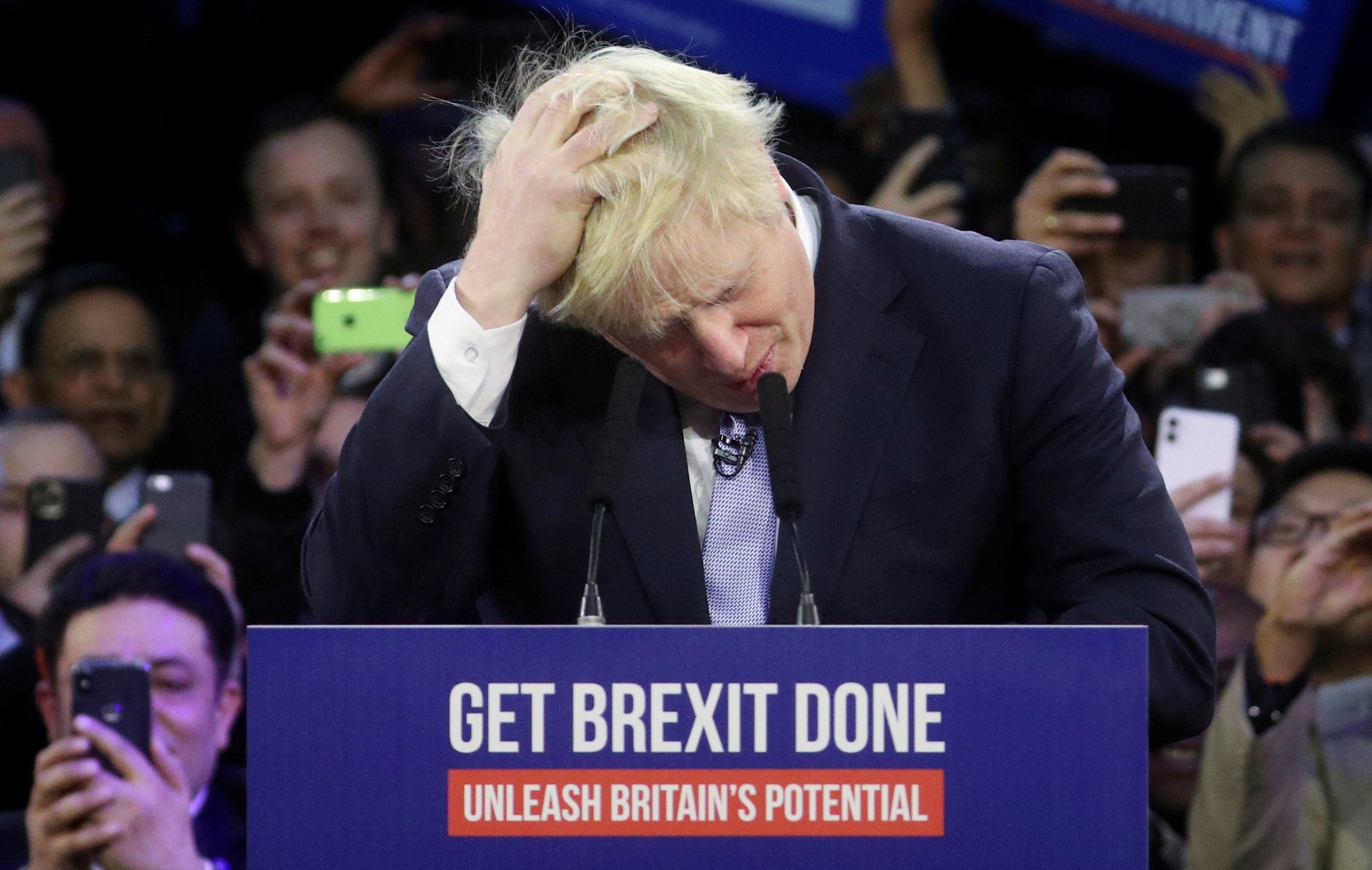Politicians are embracing disinformation in the UK election
While voters despair at political misinformation, British politicians have seemingly treated such tactics as inspiration.


While voters despair at political misinformation, British politicians have seemingly treated such tactics as inspiration.
The UK general election, which takes place today (Dec. 12), has been awash in fake news, half truths, and disputed facts, with many false assertions coming from those in authority such as political leaders and established journalists. Sorting through the various contradictory allegations to figure out what really happened is exhausting—which is, ultimately, the point.
Experts have long warned that disinformation campaigns don’t win by planting one piece of fake news, but by creating a sea of confusion until voters can no longer identify the truth and have stopped caring. The UK election is just the latest evidence that political facts are losing their power, and some politicians are rejoicing.
There’s a lengthy list of fake news claims that received attention this election cycle. No party is entirely innocent: The Conservatives created Facebook adverts with misleadingly edited snippets of BBC video; Labour claimed leaked documents show the National Health Service as a whole, rather than simply NHS drugs, is “up for sale,” while the Liberal Democrats created leaflets that looked like local newspapers. During one political debate, the Conservative Party changed its Twitter handle to look like an independent fact-checker. At times, the fact checking overwhelmed the news cycle.
A seemingly straightforward story, complicated by fake news allegations, was the focus of public attention this week in the run up to the election. A photo of a four-year-old child lying on the hospital floor with suspected pneumonia was the focus of widespread outcry, perceived as a symptom of the NHS in crisis. Though the hospital apologized for the boy’s experience, the image was quickly met with shouts of fake news, and accusations of politicians using the photo to political advantage. A viral Facebook post claimed the boy “was in fact put there by his mother who then took photos on her mobile phone and then uploaded it to media outlets.” The woman who posted this later claimed her account was hacked.
Then, Conservative health minister Matt Hancock went to the hospital that treated the boy, and senior journalists at the BBC and ITV tweeted that a Labour activist outside punched one of Hancock’s aides. A video of the incident later showed the aide walking into someone’s outstretched hand, and the Conservatives were then accused of manufacturing the incident to distract from the sick child. Eventually, it emerged that the photo of the boy was real, while claims of Hancock’s punch were fake. Only the most dedicated of news readers though, could endure such an extended back and forth to figure out the truth.
Disinformation is widely seen as a political threat when false narratives or leaked documents are planted by overseas powers. This did occur in the UK election, with Reddit claiming that US-UK trade documents were leaked by a Russia information operation. But the overall impact of disinformation is far more chaotic. Rather than one story distorting the political conversation, there’s an incessant bombardment of false claims from all sides of the political aisle. This muddles sincere arguments and makes it difficult to weigh policy proposals against each other. Anything goes in this environment. If Labour’s strong record on reducing homelessness is inconvenient, for example, their political opponents can simply claim that homelessness “reached its peak” under Labour. The public is aware of the erosion of truth: Prime minister Boris Johnson was laughed at by a debate audience for saying he thought “truth matters.”
These are dirty tactics, but it’s clear that some politicians have embraced them. Senior government officials said to Bloomberg that a review into disinformation’s impact will be necessary after this election. “In my political memory, it’s never been like this,” Steven Barnett, a professor of communications at the University of Westminster in London, told the news outlet. “It’s quite a clever strategy, but it serves to undermine faith in the whole political system. There’s a greater sense of skepticism and cynicism about any of the promises that are made.”
Amid such chaos, it’s difficult to know if any particular disinformation lie works for one party’s advantage. But the scale of fake news in the UK election shows that, while such tactics are met with dismay, politicians hungry to win are apt to watch and learn. Misinformation has grown in scale since 2016, when fake news distorted the US presidential election and Brexit campaign. Disinformation tactics have since infiltrated elections in India, Spain, and Brazil. It’s only going to get worse.